The Estonian-American film producer and director, Bill Rebane, has certainly had an interesting life. Born in Latvia, schooled in Germany and worked in the United States, he’s one of the few people of Estonian heritage who have made a difference in the arts of motion pictures. And yet, after a lifetime of making horror films, some of them rather intriguingly titled as The Giant Spider Invasion, Monster A Go-Go and Blood Harvest, Rebane admits that he’s never been a fan of horror. Interestingly though, even at the age of 77, he’s in the process of producing a musical based on one of his earlier movies, and he has put his heart into restoring an Estonian church in the village of Gleason, Wisconsin, some 300 miles north from Chicago.
Escape from the war
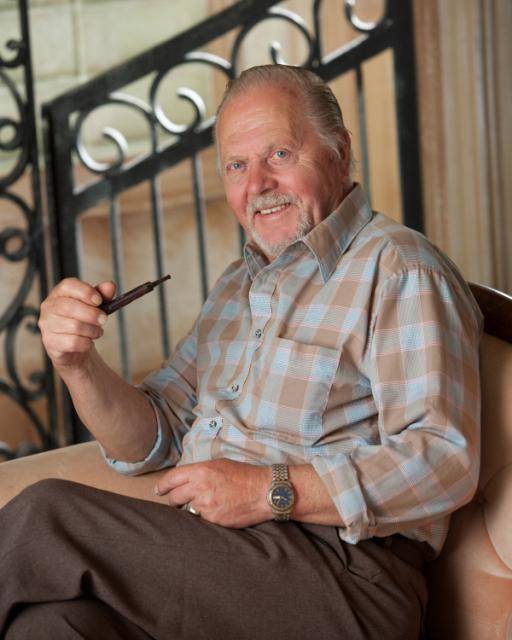 Bill hasn’t always been Bill. When he was born in Riga, the capital of Latvia, in 1937, he was named Ito by his Latvian mother and Estonian father. Being an international man from an early age – “I was shuttled around between Reval and Riga for the first few years” – the fate of many of his contemporaries caught up with Bill and his family, forcing them to leave the countries they held dear and being evacuated to Königsberg (now Kaliningrad) in Prussia.
Bill hasn’t always been Bill. When he was born in Riga, the capital of Latvia, in 1937, he was named Ito by his Latvian mother and Estonian father. Being an international man from an early age – “I was shuttled around between Reval and Riga for the first few years” – the fate of many of his contemporaries caught up with Bill and his family, forcing them to leave the countries they held dear and being evacuated to Königsberg (now Kaliningrad) in Prussia.
“I assume the move to Prussia was to get the family out of harms way,” Bill recalls now. His father – a boxer with the Tartu boxing team – was drafted into the German army, and when the bombing of Königsberg began, he wasn’t there. Rebane, with his mother and grandmother and thousands of other people, escaped the war once again – by horse and wagon – first to Poland and then to Germany. Fortunately for the Rebane family, after arriving in the outskirts of Berlin during the fall of the city, they didn’t stay in the Soviet-occupied zone of Germany but escaped further west, finally settling in the Hamburg area.
More Estonian/American than anything else
Along the way from Berlin to Hamburg, Bill says a small miracle occurred. “My father found us among the thousands of escaping refugees,” he says. “He had been wounded and shipped to an army hospital in Berlin, prior to the fall of the city.”
Bill remembers his father as “very nationalistic”. “He only spoke Estonian, even in Germany,” Bill notes. “My mother spoke six languages, and I favoured German in all communication.”
So who does such an international man himself consider to be – Estonian, Latvian, American? “More Estonian/American than anything else,” Bill says. Quite understandable, too – a father who only spoke Estonian, and Bill himself living in the United States the best part of his life.
The first taste of art
After Germany had capitulated to the Allies in 1945, Bill says he went to public and private schools until the age of 14. “I participated in school plays, played the accordion and the violin,” he recalls, adding that he “hated the violin”.
“When movie theatres opened, I was riveted to them.” At the same time, he dug into hundreds of novels in German – but interestingly, most of them were American westerns.
In 1952, he got his first-hand experience of America – albeit not exactly a western. Having moved to the American Midwest, at the age of 17 he started working at Chicago’s WGN Television – a channel that to this day is one of the primary local TV stations for Chicagoans. “It was a most rewarding experience,” Bill says. “The opportunities there were great. I moved from Assistant Director to Assistant and Executive Producer roles at WGN.”
At the same time, Bill was taking daily dancing and singing lessons – “prompted and encouraged by my mother”. These lessons came in very handy – he appeared in the courtroom drama series called They Stand Accused, and the musical series, The International Café.
Horror movies were not in the agenda
Bill’s nights in the Windy City were filled with going to the cinema. “I was thrilled with the business of entertainment,” he admits – but “performances rather than production”. And when he got an art scholarship for the Art Institute, he decided to go to the Goodman Theatre to study drama instead.
He created, produced and directed two musical short subjects, Twist Craze and Dance Craze that were both very successful productions. “I was most proud of Dance Craze,” Bill declares, adding that after it had premiered at the Oriental Theater for six weeks, it was sold for considerable profit to American International Pictures. “For its time, the idea and execution was good and I surprised myself.”
“Horror movies were not in the agenda,” Bill states. “It was not until I learned about the business of film while travelling to Germany and Hollywood, that I decided to get into theatrical production.”
The first film made entirely in Chicago since the 1930ies
So if horror films were not in the agenda, how did it happen that this is the main reason of Bill’s fame? “One had to do something that was timely and edgy for cash flow purposes,” he admits. “Sci-fi and horror were a good venue for drive-in cinemas and neighbourhood theatres. That was the reason for making Terror at Halfday, aka Monster A Go-Go.”
The 1965 production of Monster A Go-Go is actually a historic film. “It’s the first feature film made entirely in Chicago after the Charlie Chaplin studios closed there in the 1930ies,” Bill points out. “But that’s a story of its own.”
One of the most well known productions Bill’s directed is The Giant Spider Invasion. The 1975 movie about giant spiders that terrorise the town of Merrill, Wisconsin, was made, according to Bill, as a “commercial and playable money-making picture”. He adds, “Artistic statements were tougher to sell and to get financed.”
The Giant Spider Invasion made Bill the producer/director of one of the fifty top-grossing films in 1975 – the movie made 23 million dollars gross that year, making Bill one of the most successful film directors with Estonian roots – if not the most.
But The Giant Spider Invasion is not only a successful film. In 2011, Bill started to work on a musical version of it. “Production plans are in negotiating stages,” he says, but “the soundtrack CD of this is doing quite well”.
It’s the escapism and entertainment
Even though Bill is a successful horror film director, he maintains he’s “never been a fan of horror, especially not of graphic horror”. “Edgar Allan Poe is more my style, and the paranormal. The material must be story and character-driven.”
“I’m still trying to figure out if I really made ‘horror’ films,” Bill contemplates. “For some strange reason, the word ‘horror’ still bugs me. Maybe it’s because I’ve written so much against the violence and graphic horror that comes out of Hollywood.”
He says he doesn’t know what appeals to people about horror movies. “I assume it’s the escapism and entertainment for some.” Does he have a favourite horror movie? “The Hunchback of Notre Dame and the original Frankenstein.”
What about the films Bill himself has made? “The feature film I’m the most proud of is The Alpha Incident,” he’s certain. The 1978 production about a deadly organism that can destroy all life on Earth does indeed sound intriguing.
Estonian filmmakers should take advantage of the US
To this day, at the age of 77, Bill is still active in writing and producing. “I’m mostly writing screenplays and working on my third novel. And I recently sold a screenplay for a Shirley MacLaine picture to a Hollywood production company, Enderby Entertainment.”
Bill says he’s seen quite a few short films and promotional pieces from Estonian filmmakers. “I’ve been amazed by the technical quality and performances given,” he says. “I would like to see more. Would help me learn to speak Estonian again.”
What kind of advice does the legendary director have for today’s filmmakers of Estonia? “For feature films, I would suggest they subtitle or shoot English versions to take advantage of the North American market,” he suggests. “I would welcome submissions for representation, especially for feature films.”
Not only a movie producer
Many stars of the American film industry have become fed up with Hollywood and moved to the life of politics. Arnold Schwarzenegger was Governor of California for eight years. Decades earlier, Ronald Reagan filled the same seat for another eight years and later became President of the United States.
And while Bill is not fed up with the life of a filmmaker, he too has tried his hand in politics. “Politics and government interest me,” he admits. “Especially when I’m affected by political idiocy.”
Thus he twice has run for Governor of Wisconsin, the first time in 1979 and then in 2002, as the American Reform Party candidate. “The 2002 run was very serious. I rebel against bad politicians and bad leaders. My sitting opponent was bad for our state.”
Even though he didn’t win, Bill can still say he made his mark. “I’ve been a victim of governmental blunders and corruption. To make a difference, one must get involved.”
Restoring the first Estonian church in North America
One of the things Bill’s taken into heart, besides filmmaking and politics, is a small Estonian church in Gleason, Wisconsin. Years ago, Bill himself lived in Gleason, and now he’s tirelessly working on restoring the old house of worship – the first Estonian church in North America.
“When I moved to Gleason in 1966, I had no idea I was moving into an Estonian settlement,” Bill confesses. “I visited Albert Sommi, one of the original founders of the church, in the early seventies. His last and biggest wish was that the church would remain as a reminder to all Estonians of the early Estonian immigrants to America.” So, in 1994, Bill Rebane reinstated the 1907-established church in its original founded name – the Estonian Evangelical Martin Luther Church.
Unfortunately, there aren’t many Estonians left in Gleason area to be interested in the restoration of the church. “More Americans find this to be a good cause,” Bill admits. “Which is sad. I read that Estonia is one of the least religious countries in the world. They will have to understand that this is more than a church – irrespective of religious preferences, it is a monument to freedom and the Republic of Estonia as a whole.”
“Our President, Toomas Ilves, knows about the church. It would be nice if he could come and see it personally,” Bill says hopefully.
I
Cover photo: Bill Rebane (second from left) at the set of The Giant Spider Invasion. From Bill’s private collection.

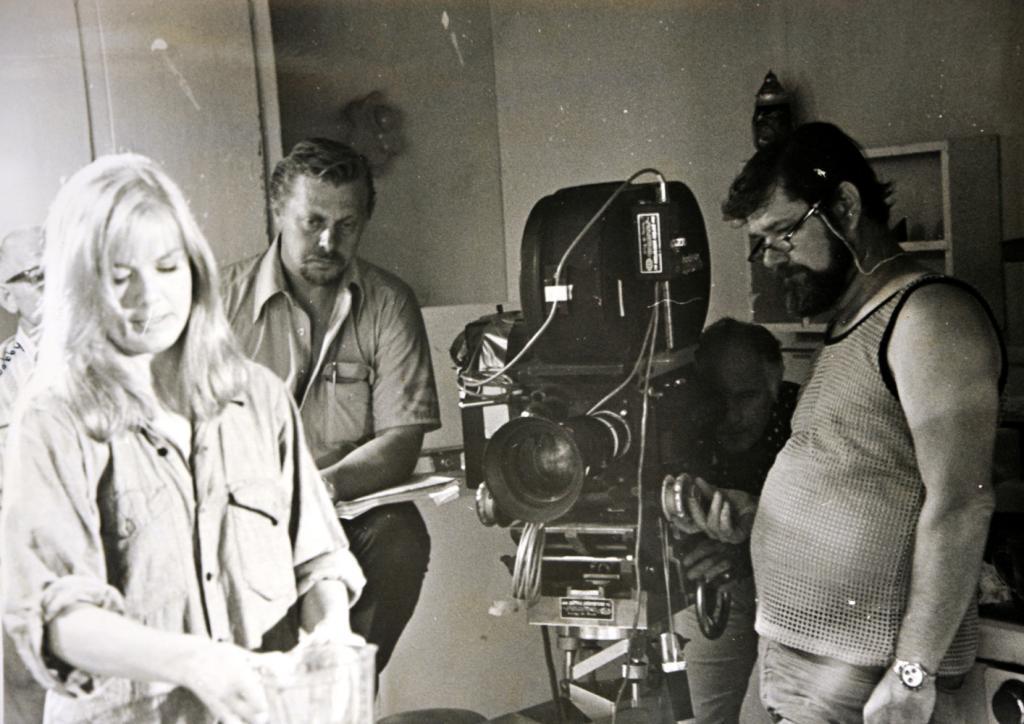
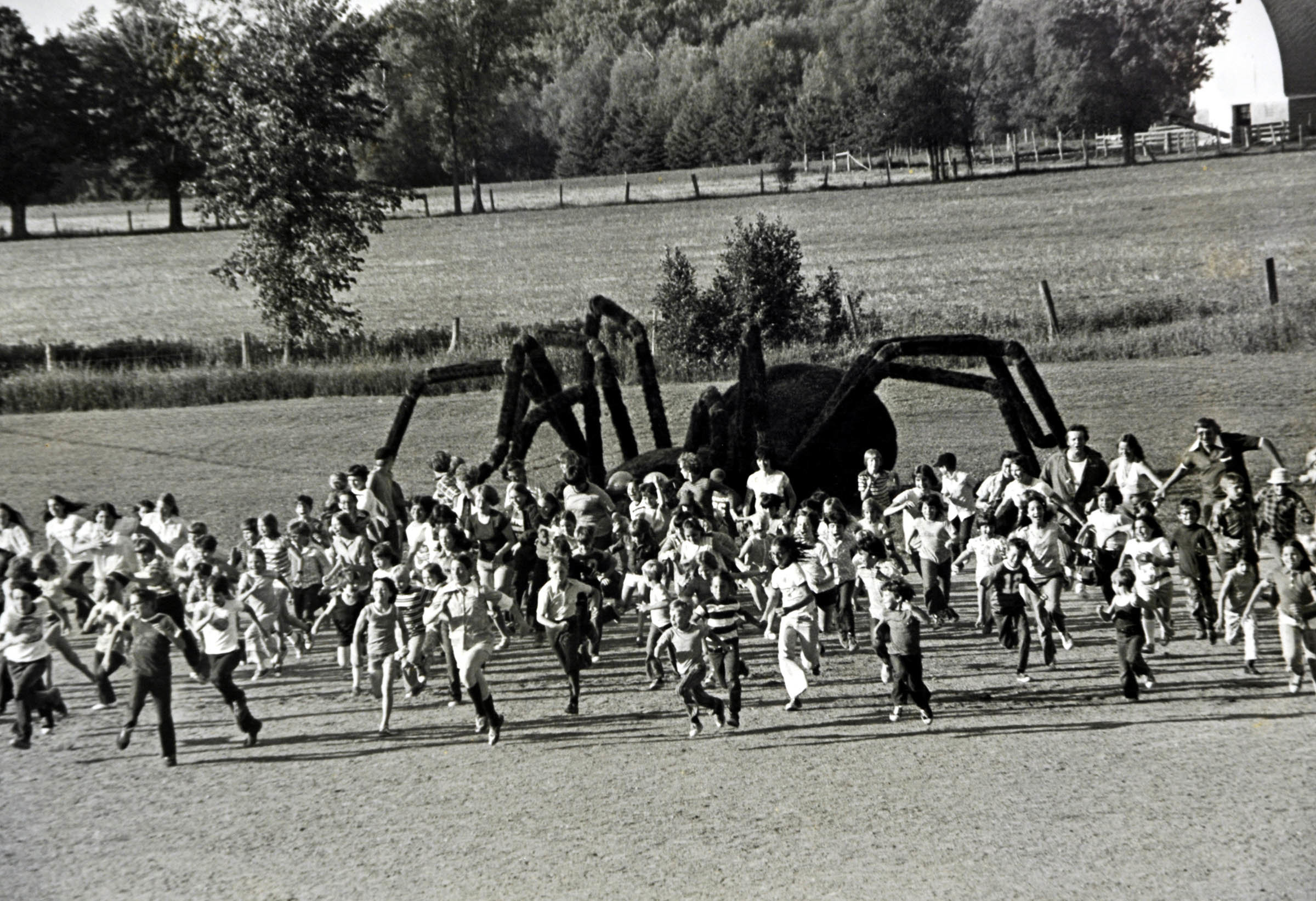
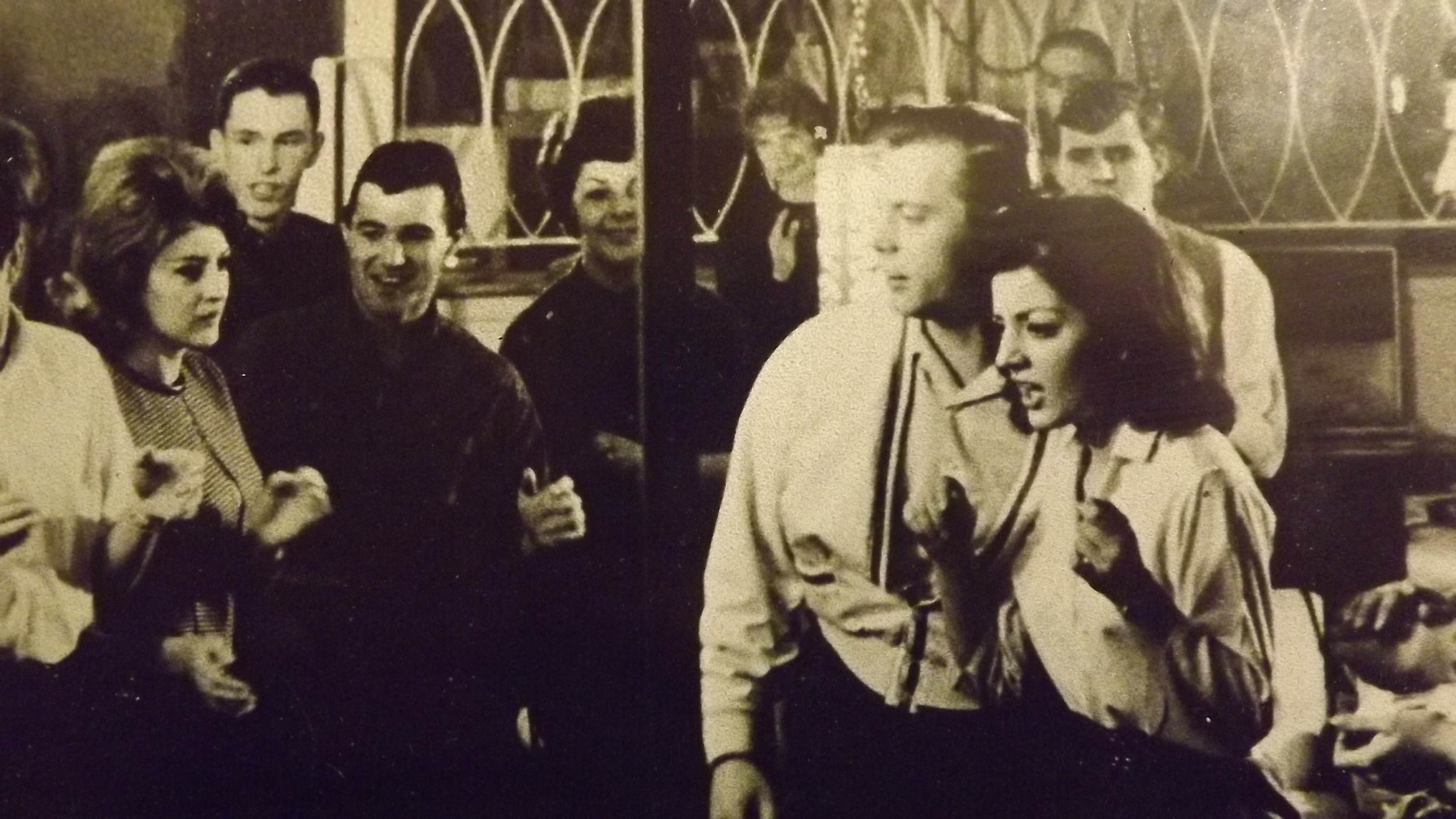
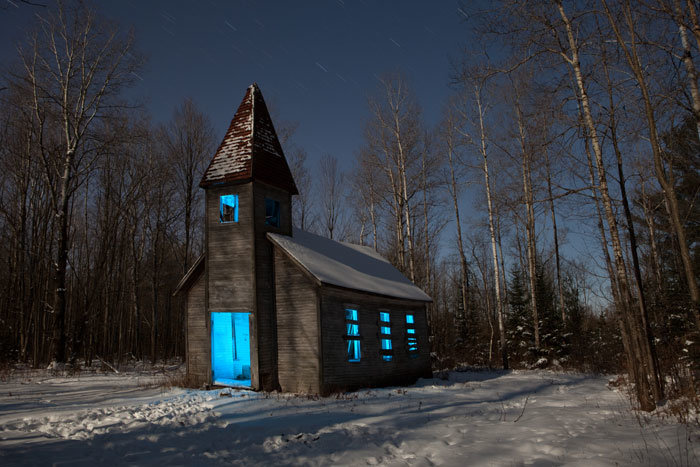
check out his site about the church he’s working on restoration of… http://firstestonianchurch.com/
A great article about a great guy!
Bill Rebane is one of the most fascinating individuals I have ever had the privilege of working with to date. He is an inspiration to everyone. Although he has already excelled in the entertainment business Bill strives to leave a much bigger mark by always challenging injustice. I hope his next book will be an autobiography of his trials and triumphs.
Please credit the above night photograph from Chris Robleski of Fading Nostalgia!